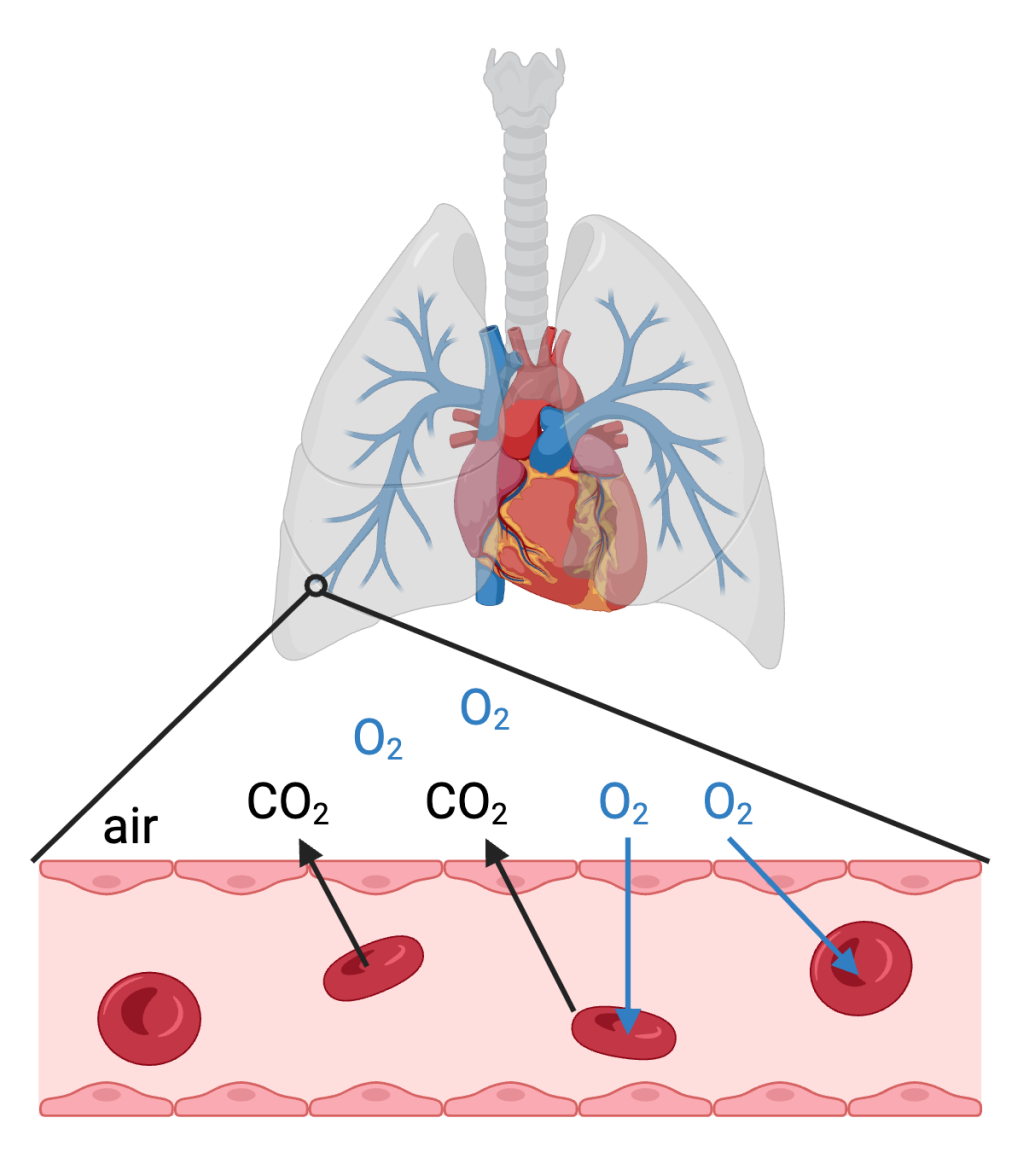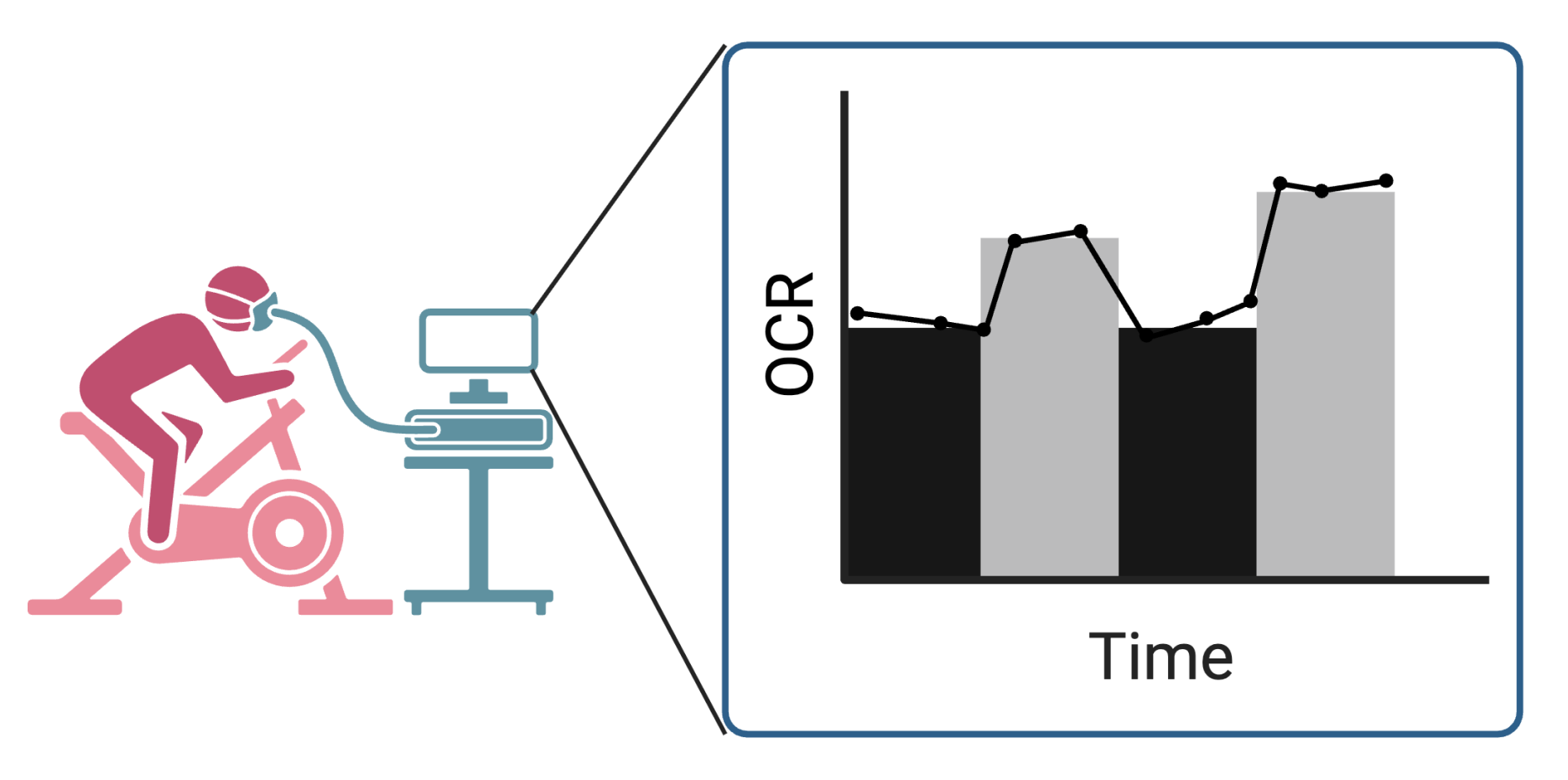9.4 Measuring Metabolic Rate
Christelle Sabatier
Learning Objectives
By the end of this section, you will be able to do the following:
- Explain how cellular respiration at the cellular level is connected to metabolic rate measurements at the whole organism level.
- Describe the four main tissue types in animals.
Virtually every task performed by living organisms requires energy. Organisms require energy to perform heavy labor and exercise, with some including humans also using considerable energy while thinking, and even during sleep. Every organism’s living cells constantly use energy. Organisms must import nutrients and other molecules. They need to constantly synthesize new molecules, such as proteins. Additionally, signaling molecules such as hormones and neurotransmitters need to be transported between cells. Some cells ingest and break down bacteria and viruses. Cells must also export waste and toxins to stay healthy, and many cells must swim or move surrounding materials via the beating motion of cellular appendages like cilia and flagella. All of these processes require energy. The majority of the energy generated by every single cell is derived from the process of cellular respiration:
C6H12O6 + 6O2 → 6CO2 + 6H2O + energy
Although cellular respiration occurs at the cellular level, multicellular organisms work hard to ensure that the reactants are obtained from the external environment and distributed throughout the organism so that they can reach all cells. We’ve already discussed the mechanisms by which glucose and other organic molecules whose energy is extracted to promote the formation of ATP is obtained via the digestive track in Section 5.1 and Section 5.2. Oxygen in smaller animals can diffuse from the atmosphere into all of the organisms’ cells via simple diffusion. However, in larger organisms such as humans, specialized respiratory systems have evolved to maximize the uptake of oxygen (Figure 9.4.1).

Since cellular respiration is the only process in the body that uses O2 as a reactant, the total energy being used in an organism can be measured by tracking oxygen consumption. By controlling the amount of O2 that an organism is exposed to and measuring the concentration of O2 over time, scientists and medical professionals can track the changes in cellular respiration across an entire body as they change either internal or external conditions (Figure 9.4.2). This is commonly done by training athletes and can help scientists study the impact of different conditions on the bioenergetics of an animal.

Even at rest, organisms consume oxygen. This is due to their basal metabolic rate, or the rate at which the body uses energy while at rest to keep vital functions going. These vital functions might include the heart beating and the activity of muscles that are responsible for breathing. In some organisms, some of these vital functions might also mean maintaining a constant body temperature. One way to modify oxygen consumption rate (OCR) is to change the activity level of the organism. If an organism is running or cycling as shown in Figure 9.4.2, their skeletal muscle cells will quickly require more energy in the form of ATP as hydrolysis of ATP powers muscle contractions. As a result, the OCR of the entire organism will increase when skeletal muscles are contracting more rapidly. In addition, heart rate and breathing rates will increase to ensure oxygen is replenished quickly within the organism and those muscle contractions will also contribute to the increased OCR.
Not all tissues have equal needs across an organism. You can learn more about the animal tissues typically found in animals in Video 9.4.1 below.
Video 9.4.1. The Four Types of Tissues – Epithelial, Connective, Nervous, and Muscular by Armando Hasudungan
Nervous tissue has the highest metabolic rate as the activity required to maintain the ion gradients responsible for neuronal transmission are energetically costly. As already mentioned, muscle tissue has different energetic needs depending on their contraction rates. Epithelial cells that are responsible for absorption or secretion as we might find in the digestive track for example have a higher metabolic rate when they are active compared to when they are inactive. Finally, connective tissue has a generally low metabolic rate compared to all other tissues.
Practice Questions
Glossary
cellular respiration
metabolic pathway that transfer the energy in the C-C bonds of glucose to the molecule ATP
basal metabolic rate
energy used to keep vital functions going
oxygen consumption rate
amount of oxygen taken in by the body and used through cellular respiration per minute
Figure Descriptions
Figure 9.4.1. The image illustrates the process of gas exchange in the human respiratory system. At the top, there is a depiction of a human lung with bronchi branching out and a heart centrally located, showing the anatomical relationship between them. Below this, a close-up section displays the interior of an alveolus with red blood cells interacting with gases. The alveolus is shown as a pink, rectangular structure with a smooth lining, containing red blood cells which appear as biconcave discs. Arrow lines indicate the exchange of gases, with carbon dioxide (CO2) and oxygen (O2) labeled. Air is entering the alveolus, while CO2 leaves the red blood cells and O2 enters them, signifying the gas exchange process occurring in the lungs. [Return to Figure 9.4.1]
Figure 9.4.2. The image features an illustration of a person engaged in exercise on a stationary bike while wearing a mask connected to a device. The bike is depicted in shades of red and the person, also in red, is bent over the handlebars, actively pedaling. Attached to the person’s mask is a tube linked to a machine with a display, shown in blue. To the right, a box contains a bar graph. The graph includes four vertical bars that are either black or grey, each representing different time periods. Both black bars are lower than both grey bars. A black line connects dots along the graph, indicating data fluctuations over time. The x-axis is labeled “Time” and the y-axis is labeled “OCR.” [Return to Figure 9.4.2]
Media Attributions
- Gas exchange in lungs © BioRender is licensed under a CC BY (Attribution) license
- Oxygen Consumption Measurement (1) © BioRender
metabolic pathway that transfer the energy in the C-C bonds of glucose to the molecule ATP
the rate at which the body uses energy while at rest to keep vital functions going
Amount of oxygen taken in by the body and used per minute
